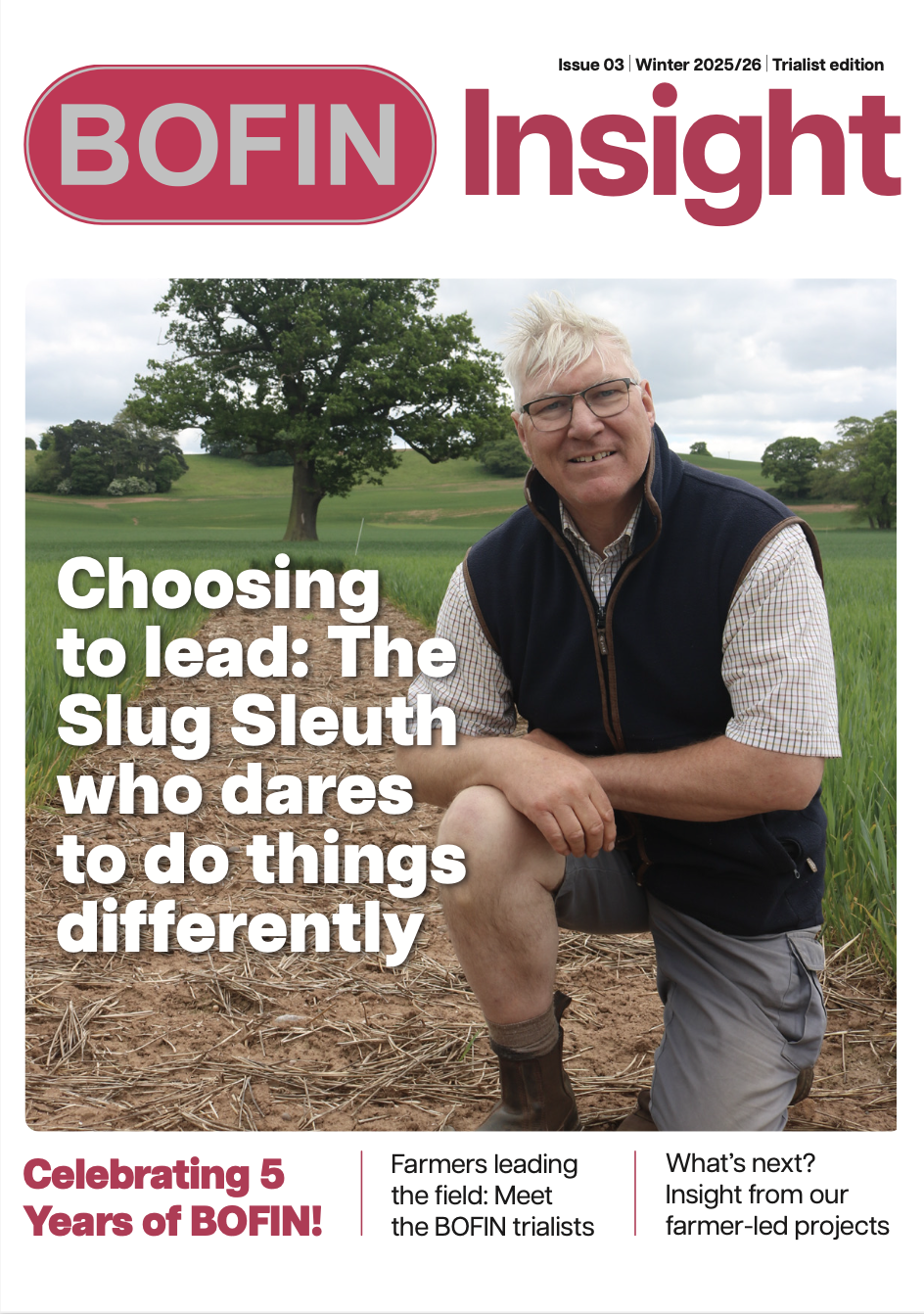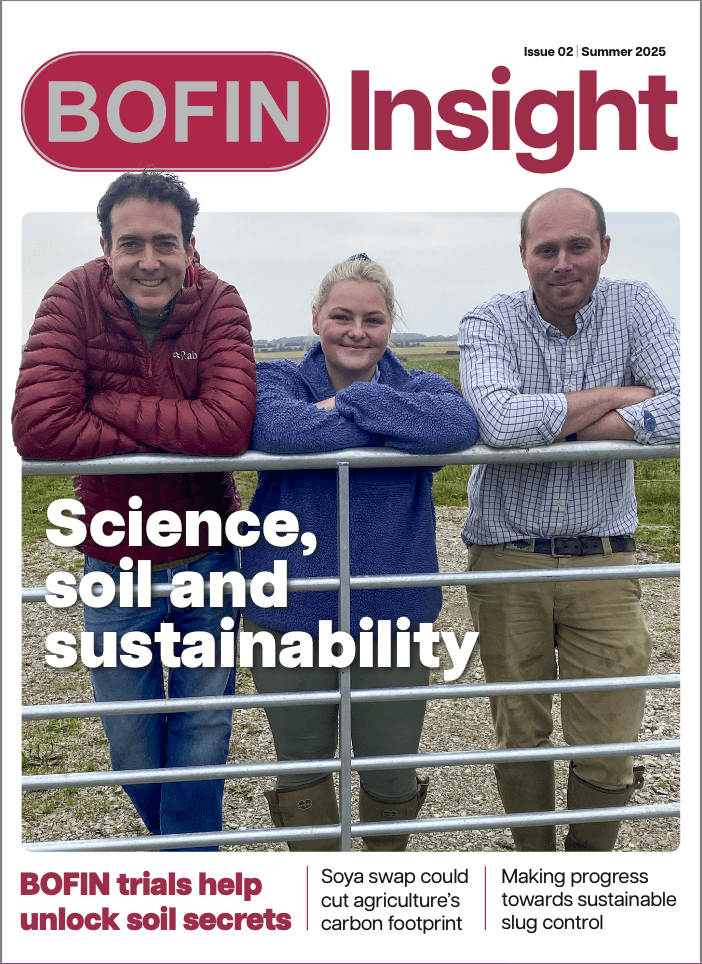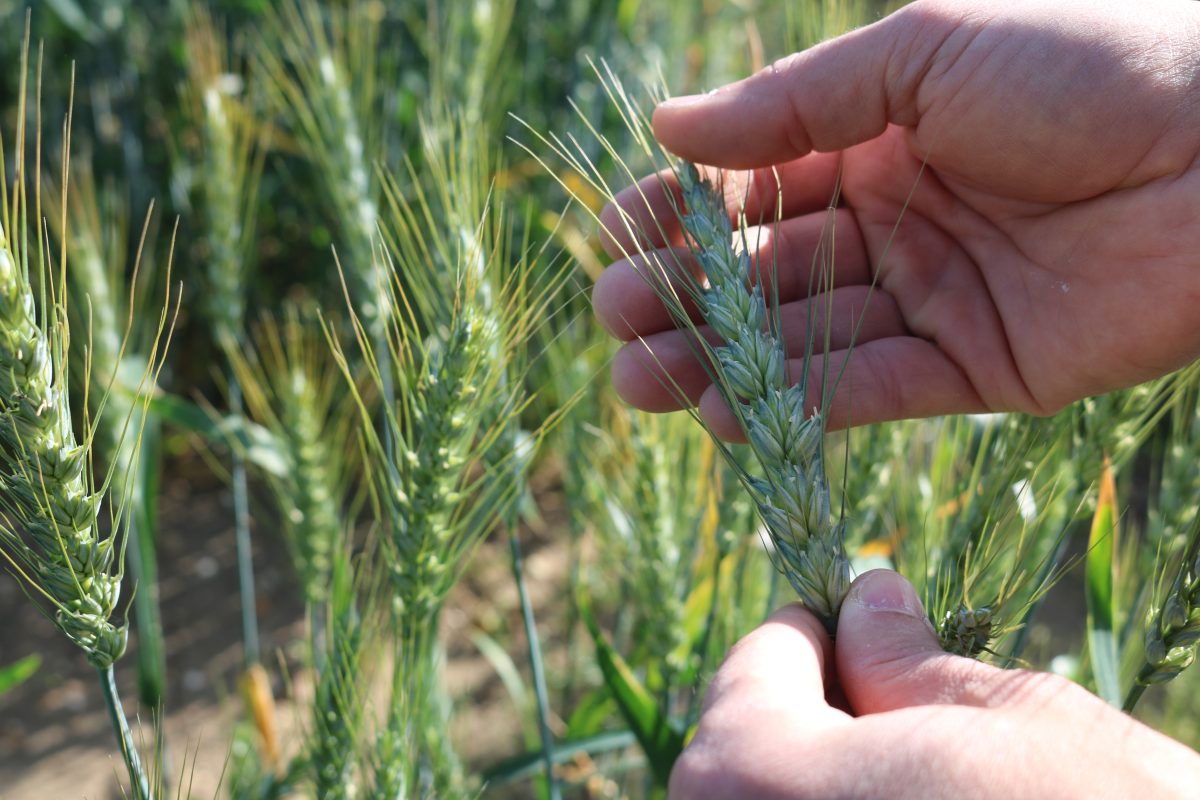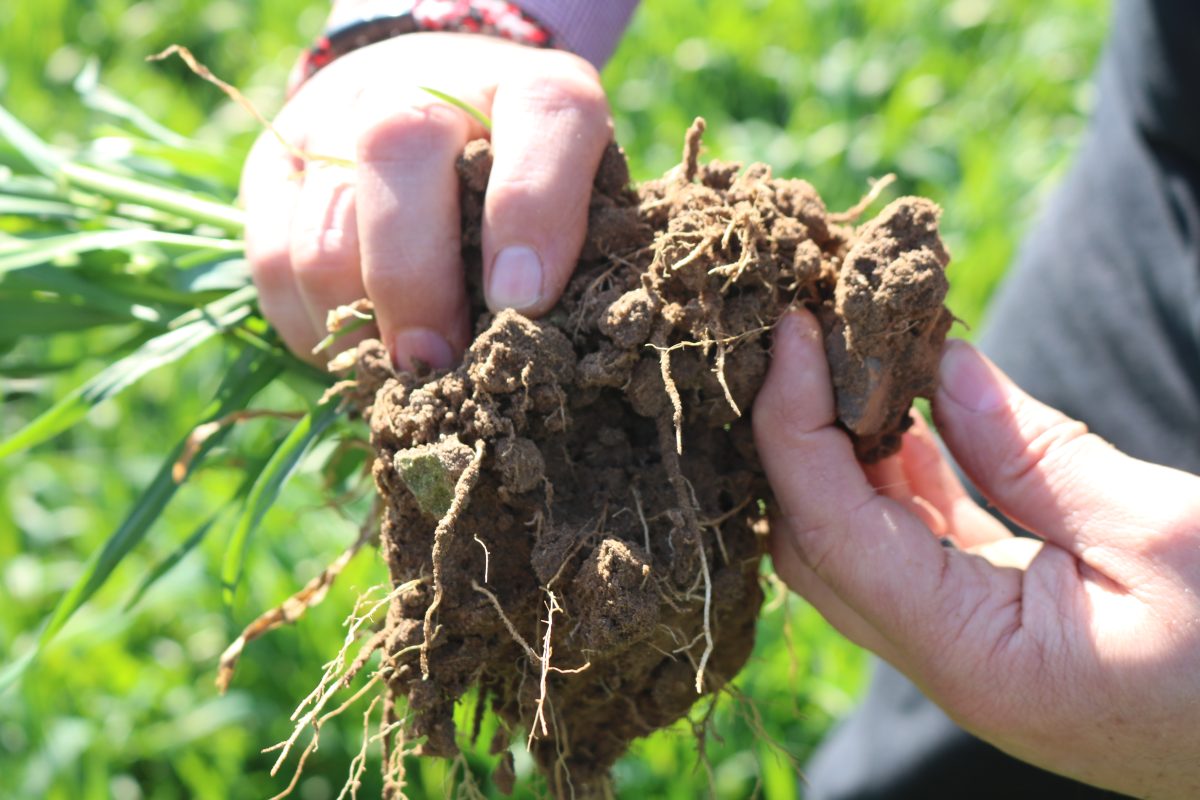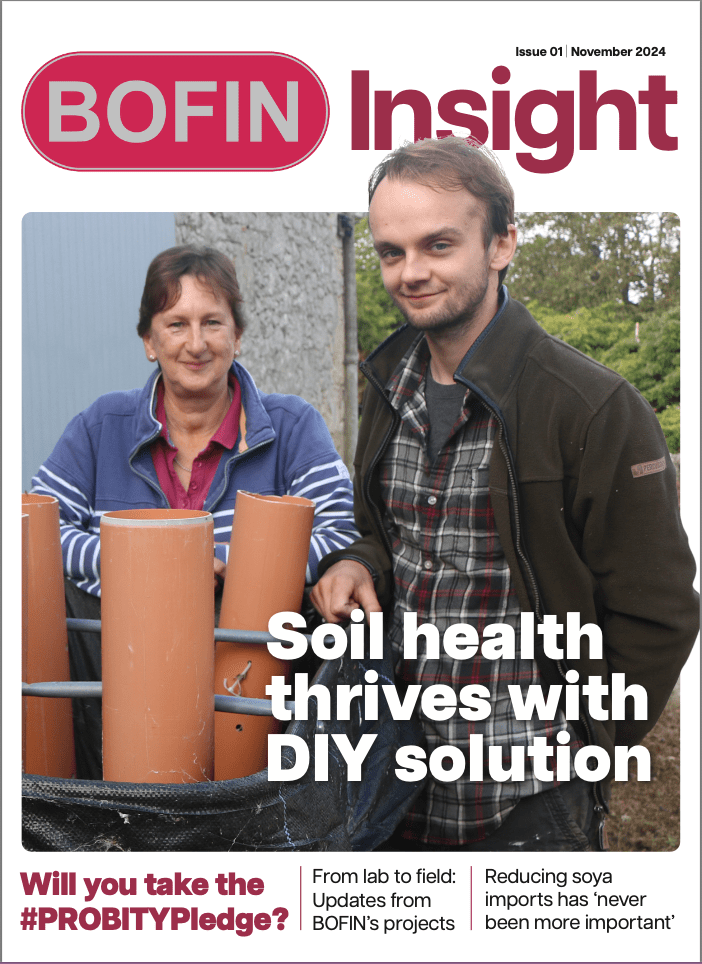Former GP Tom Pearson took over management of his family’s Cambridgeshire farm in 2016 and has since made some major changes, including committing to a regenerative approach and a series of on-farm trials.
When Tom Pearson took over management of Manor Farm in Caxton it wasn’t just about continuing a family tradition – he also began crafting a new narrative involving science, soil health, and sustainability. Despite having no formal agricultural training, Tom’s scientific background and thirst to ‘do different’ set the stage for a transformative journey.
With only a 12-month handover period from his father, he faced a steep learning curve and grasped any informal learning opportunities, particularly through AHDB Monitor Farms and events like Groundswell. Together with his scientific mindset, it sparked an interest in soil health and regenerative farming principles. Tom’s approach to farming soon evolved to focus on key themes of regenerative principles and active participation in research, alongside creating a profitable and sustainable business.
While his interest in regenerative farming was piqued by the promise of reduced spending and risk, it went beyond economics. Tom says: “I recognised the fact that a lot of people can’t do much about climate change – but as farmers we have a big opportunity and should do the best we can. I felt that using fewer inputs and using nature to help me farm was the right choice in the long term, both from an economic and sustainability point of view.
“I also liked the idea of doing something different to the norm,” he admits. “But above all, regen put the excitement back into farming for me.”
Regen transition
He transitioned the 480ha farm in blocks, introducing cover crops and catch crops on an increasing area. Then in 2022, with the whole farm committed to regenerative principles, he recruited Rhys Jones as farm manager. A Harper Adams graduate with a passion for soil health and regenerative farming, Rhys was keen to take this forward with Tom, and strengthen the farm’s regen credentials further. They boosted the team further still in 2024 when Shona Russell took on the role of regenerative farming research and data lead. Shona’s CV includes a master’sdegree in agroecology and a stint as trials coordinator for a large farming company.
Rhys explains that the aim is to always have diverse living roots growing, alongside a commitment to controlled traffic and no-till. “At harvest we drill straight behind the combine, growing a diverse catch crop for six to eight weeks before drilling the winter crops, or up to six months of diverse cover crops when drilling our spring crops.”
They are looking to find ways to improve the system too and have been working to perfect both companion and cover cropping. With the latter they now favour a phacelia, white vetch, linseed, clover, buckwheat, fodder radish and smart radish mix; each species bringing its own benefits.
Rhys has also implemented a grazing system for these, bringing a local sheep
farmer on board. He explains: “The aim with the cover crops is that the sheep graze a third, trample a third and leave a third. We take biomass samples before it’s grazed to understand the nutrition that’s gone into the soil and the sheep, which means we can amend future input plans accordingly.
“We look at how much phosphorus, magnesium, zinc and potash is in the field and how much is available to the next crop once it’s gone through the sheep. “I believe there is huge potential in cover crops.”
The visiting sheep also graze wheat crops in late winter, until early March or the wheat reaches growth stage 31.
“Grazing it back like this clears out any fungal disease because the sheep eat the infected leaves. The action of grazing also encourages exudation, promotes tillering and has a growth regulating effect. We compared grazed areas to control plots and there was no yield penalty as long as the grazing is done before the ear is at 1cm,” says Rhys.
The move to Controlled Traffic Farming (CTF) required investment but has already brought about improved soil infiltration rates, says Tom: “We sold off all the big horsepower tractors and cultivation kit which covered the cost of the remaining set up we needed including a new trailed sprayer and drill. We now have much less kit but it’s very expensive. You must have buy-in from your team and you need to know they will look after it. I’m very grateful that Rhys keeps an incredibly tidy cab!”
Rhys adds: “In theory we could operate with two tractors and rent one more for harvest, but we have kept a couple of old ones for corn carting. We used to have 2hp/acre across the farm and have halved that.”
Unfortunately, the fuel bill hasn’t also halved, says Tom. “We chop straw and that uses plenty of fuel, but we have reduced from 46,000 litres to around 30,000 litres.” Fertiliser use is another big saving made through the changes, and instead they are investing in foliar nutrition.
Taking part in research has also been a theme for Tom. He says: “The medical world is obsessed with research and evidence, so it was natural for me to look for it in agriculture. My attitude has always been that if there is evidence out there and it’s good, you should follow it. If the evidence is of poor quality you need to tread carefully, but if the research hasn’t been done then that is not a reason to avoid having a go!”
As a Nuffield scholar, Tom studied how farmers can make a positive impact on local community health, visiting Europe and North America to bring learnings back to the UK. “People really care about health and food and land, and I believe that agriculture and health should have better connections.”
This also ties in with the farm’s involvement in the H3 – Healthy Soil, Healthy Food, Healthy People – project which is scientifically measuring the farm-scale effects of a transition to regenerative farming practices.
Root Rangers
Tom was also one of the earliest members of BOFIN. His first contribution to a BOFIN project involved taking wheat root samples as part of a study on mycorrhizal fungi by the Crop Science Centre (CSC). This led on to the creation of the TRUTH Project – Thriving Roots Underpinning Total soil Health, a £1m research project led by BOFIN with four partner organisations: the John Innes Centre, University of Nottingham, the UK Agri-Tech Centre and PES Technologies.
Joining TRUTH as ‘Root Ranger’ farmer trialists involves taking soil samples which are analysed by the project scientists. Each farmer also runs a trial of their choice within the project and for year one of TRUTH (2024), Rhys chose to study the impact of sheep grazing winter wheat in late winter and early spring. He is continuing this in year two while also overlaying a variety trial.
Rhys says: “Different seed houses think their varieties have interesting rooting characteristics but this is a chance to test it for ourselves. We are trialling two tramlines of RAGT’s Illustrious and studying the soil interactions through the sampling compared to the farm standard variety (Nelson). Our priority here is soil health and our mantra is living roots and biodiversity,” he continues. “The TRUTH project gives us insight into how our living roots are working for us, and by undertaking the trial on our three-way wheat blend with microclover understory last year, we got some quantifiable and benchmarked results about the value of companion cropping and wheat blends.”
Rhys says: “In 2024, as part of a wider strategy, this allowed us to grow milling wheat without the use of fungicides or growth regulators. The soil sampling undertaken through the TRUTH project will hopefully allow us to understand the wider benefits of this approach, alongside the cost savings!”
Slug Sleuths
Rhys is also a ‘Slug Sleuth’ within the SLIMERS – Strategies Leading to Improved Management and Enhanced Resilience to Slugs – project. This is another project led by BOFIN with six partner organisations: the UK Agri-Tech Centre, Harper Adams University, John Innes Centre, Agrivation, Fotenix, and Farmscan Ag.
Rhys says: “The brassicas in our cover crop mix are a slug haven so SLIMERS is another opportunity to explore reduced inputs.” For the Slug Sleuths, the project involves slug monitoring by setting out simple ‘traps’ and collecting data on slug numbers over the winter months. This data is helping the SLIMERS scientists gain better understanding of slug behaviour and is contributing to the development of sustainable control solutions including patch treatment and use of AI and automation.
Rhys is also trialling varieties of ‘slug resistant’ wheat. This is a variety from the John Innes Centre’s Watkins collection that has been identified as potentially slug resistant by feeding trials run at the centre.
The trials are in their third year, and results from the field so far appear to back up findings from the lab that suggest the wheat is consistently spurned by slugs. As well as supporting the BOFIN trials work, Shona is working with Rhys to quantify the farm’s carbon footprint. She is also conducting Manor Farm’s own trial into biologicals and composting.
Having set up a Johnson-Su composting system in a series of IBCs, she is testing out different compost recipes based on a 50/50 green and brown mix with ingredients including straw from non-fungicide wheat, wood chip from a fallen tree, cover crop above-ground material, ‘hay’ from a neighbour’s wildflower margin, as well as grass, clover, and nettles all mixed with a forklift. Once well-rotted, this will be used to create a liquid ‘tea’ rich in beneficial fungi, bacteria, protozoa, and nematodes, which is diluted with water and applied with the drill to deliver droplets of the liquid around the seed.
The team particularly appreciates the farmer-led approach in the TRUTH and SLIMERS projects. Tom says: “BOFIN brings a farmer-oriented approach to the party, delivering proper research outcomes that ask questions that are relevant to farmers. It has also brought a new age where farmers are recognised for their contributions to research and paid for their time. But it’s not just about that, it is good to be part of something that is helping the industry while also contributing to making my farm a more exciting workplace.”
“With such an investment of time and resources into research, it’s essential that it delivers”, concludes Tom. “It is a leap of faith to go down the regen route and stick to it, and there aren’t many things you can measure to give you confirmation that you are doing the right thing. There’s no column in a spreadsheet to value what we are doing for soil health, for example. Generally, we need to be better as an industry at quantifying those gains, but at least by getting involved in research you get some answers.”
